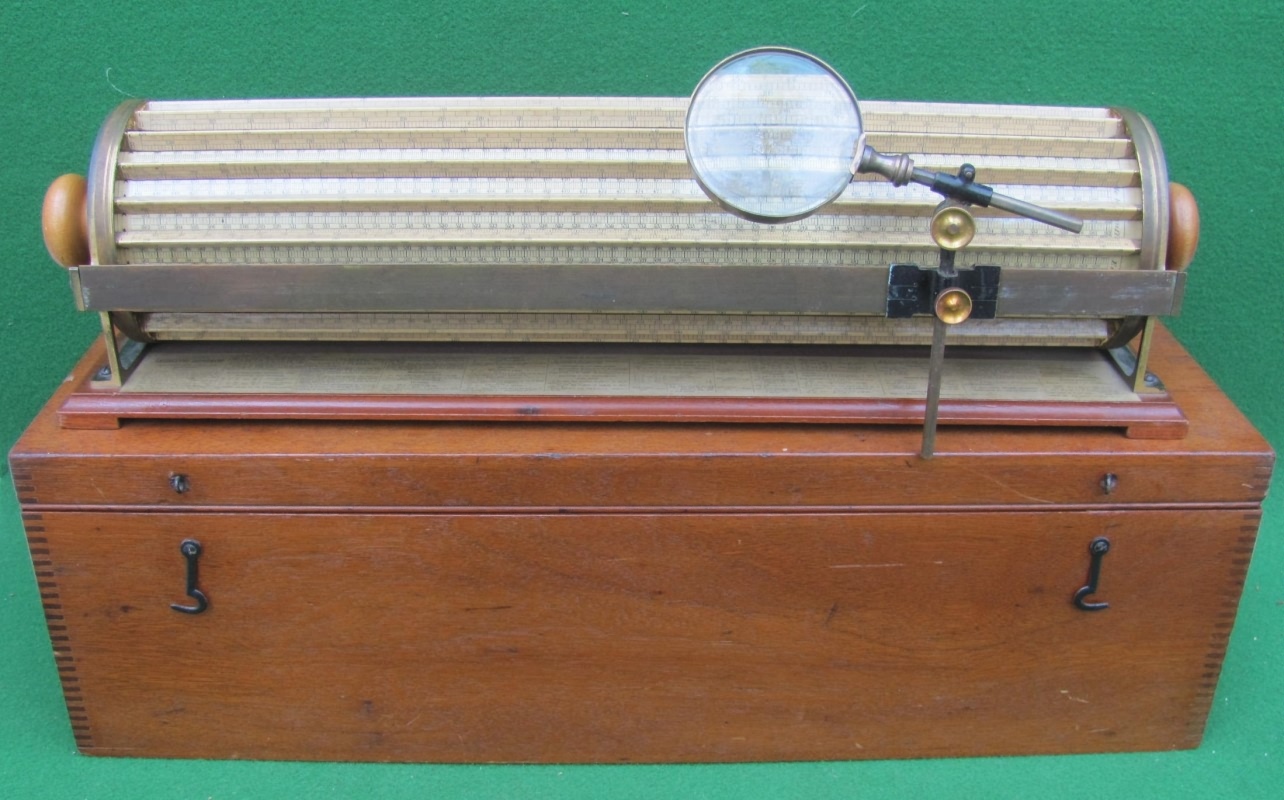Bosley, I figured I'd have to wait at least 100 years old before slide rules were worth anything. You telling me I'm already sitting on a gold (or at least bauxite) mine?
Depends, Pete. Some better slide rules fetch a hundred bucks or more. The Faber Castell 2/83N is a standard (very high end, but popular) rule in that category. Most slide rules are 25cm (called "10 inch" here in the remote colonies). For extra readability and accuracy, many models were offered in a 50cm size. Sometimes these longer versions go for 100 bucks. Other rules go for much less. A Post Versalog (one of the best, and most common slide rules) or a Keuffel Esser Log Log Duplex Decitrig (another very common, but good one) can go for ten to 50 bucks on ebay. So there is still some value.
Some rules had unstable material (Pickett used magnesium for early rules, which corroded, and Keuffel Esser cursor's are notorious for this, having "KERCS", that is, Keuffel Esser Rotting Cursor Disease) but most rules are pretty stable.
I got hooked into this a bit a couple of months ago. My stepfather was dying (he's since passed away) and I was at the house and found his Post Versalog manual. I do a lot of computer work (a calculator doesn't cut it anymore for what I do) and got interested in the logic of solving problems on a slide rule. All the different scales do different things, and different rules have different sets of scales. To solve problems efficiently, you have to come up with a plan. And the plan can use clever knowledge of math. Somewhat like coding.
So to solve for the hypotenuse of a triangle, sqr root( a^2 + b^2), on a calculator you just mash in a, square it, enter b, square it, add it, and take the root. Easier on an HP RPN machine I think, but it's pretty straightforward.
Slide rules do multiplication, division, roots, trig functions, and functions using logs. But no adding or substraction. On one type of slide rule, you'd divide a by b, square it. mentally add 1, take the square root, and multiply by b to get the answer. On another type of slide rule you'd divide a by b, get the arc tangent of that ratio, and use trig identities to get the answer efficiently. And on some slide rules, there was a "P" scale that stood for "Pythagorean", which allowed you to get the answer more directly. But these approaches are all algorithms - programs - that really smart guys and some gals used to do stuff like design the first computer, the Saturn V, the SR-71, the Golden Gate bridge, and the Boeing 747. Also, too, probably the HP-35!
So, for some of us, the rules represent 300 years of ingenious manufacturing and design and use, but also the bridge to the modern computer era.
Here's a variation on the slide rule when you make a very long rule and wrap it around a cylinder to get improved accuracy:




